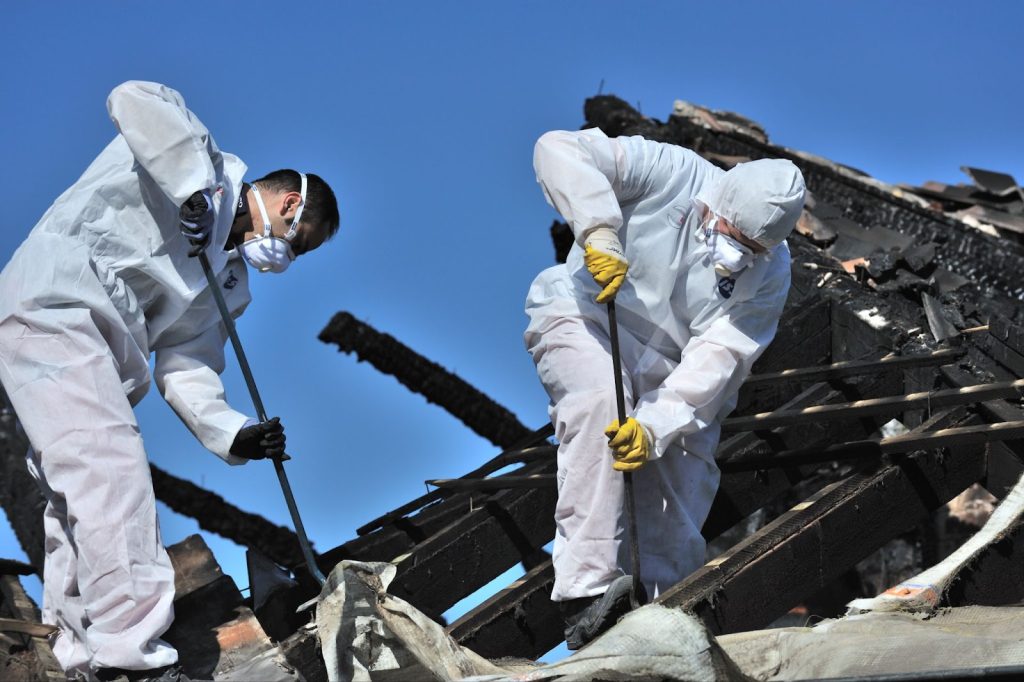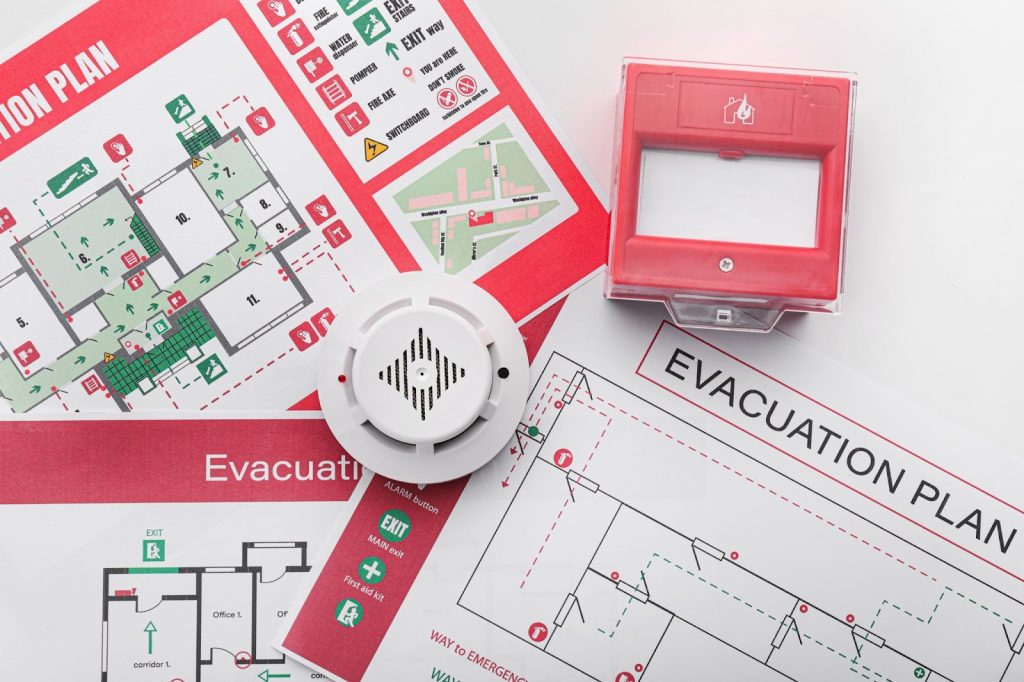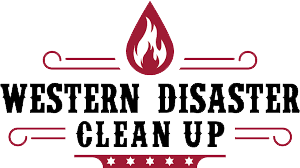Experiencing fire damage in your home is devastating. It leaves behind emotional distress and significant physical damage that requires immediate attention. The process of fire damage cleanup and restoration is necessary to restore your home to its pre-fire condition, ensuring safety and minimizing further damage.
This blog serves as a comprehensive guide to navigating the complex journey from initial damage assessment to cleanup and into the thoughtful rebuilding and renovation stages.
Whether you are only beginning to address the aftermath or looking ahead to long-term prevention, understanding each step of the fire damage restoration process will empower you to make informed decisions and help you restore your home as quickly as possible.
Initial response and safety measures
A fire is scary and often makes it hard to think straight. This is why preparedness is key. If you know what to do in advance, you’ll be able to respond in these dangerous moments. There are several steps to take to ensure that everyone is OK.
First, get out of the house and call 911. Stay out of your home until firefighters have put out the fire and say it’s okay to go back inside. While you might be tempted to run back in to grab a cherished possession, this is highly dangerous because of how fires compromise the structural integrity of your home. Firefighters are trained to determine whether your home is structurally sound and if it is safe to go back in.
Be very careful if you go back in. A fire-damaged house may be dangerous. Sometimes, floors are weak, and ceilings could fall down. Smoke often makes it hard to breathe and hides sharp things on the ground that could hurt you.
If the firefighters say you can enter, wear thick shoes and gloves to protect yourself. Listen for weird noises that might mean something could fall or break. Also, don’t touch electrical things like light switches. Water from putting out the fire may make them risky.
Keep away from things that look burned or are broken. They might not be safe. If you smell something funny or feel sick, leave right away and tell the firefighters or other experts.
Dealing with fire damage is dangerous, so even after the firefighters have left, it’s a good idea to seek professional help from a fire damage restoration company to help restore your home to its pre-fire condition.
Assessing the damage
You’ll want to assess the damage as quickly as possible, but as always, caution comes first. If the firefighters declare your home safe to enter, follow these steps yourself. However, another smart option is to ask for help from your fire damage restoration company. Either way, you’ll want to follow these steps:
- Contact insurance: Call your insurance company right away and inform them of the fire. This is the first step in having the fire damage covered by insurance.
- Take photos: Snap pictures of all the damage. This is important for your insurance claim. Your insurance company needs to see proof of what happened.
- Look for structural damage. Check if the walls, floors, and roofs are safe. If you don’t know how to do this, wait for the professionals to come.
- Check electrics: Look at your electrical systems for obvious signs of damage, but don’t touch them. This is dangerous work, so it’s best left to the pros.
- Salvage items: See if there are things you are able to save. Be careful, as some stuff might be weak from the fire.
- List your stuff: Write down what was in your house. List everything, from furniture to kitchen appliances. This helps with insurance, too.
- Get a pro’s opinion: Have someone check your smoke alarms and the house’s strength. A second or third set of eyes never hurts!
Cleanup process
Now, it’s time to create a simple plan for cleaning up the fire damage. This plan will serve as a checklist for tidying up the mess and making your space safe and cozy once more.
- Safety first: Wear protective clothing, including gloves and masks, to prevent yourself from inhaling harmful particles.
- Ventilation: Open all windows and doors to enhance air circulation, allowing fresh air to enter and smoke to dissipate.
- Assess the damage: Conduct a thorough examination of the area to determine the extent of the damage. Document everything, noting which items are destroyed or damaged.
- Salvage: Carefully retrieve items that are undamaged by the fire for cleaning and storage.
- Sorting: Evaluate each item to determine whether it is salvageable or too damaged to be repaired. This will help organize the cleanup and restoration process.
- Cleaning: Begin the process of delicately removing soot and debris from items you intend to keep. This should be done gently to avoid further damage.
- Deodorizing: Wash any items that carry a smoke odor. Some items may require professional cleaning services to fully remove the smoke smell.
By taking these steps, you will effectively manage the aftermath of fire damage, ensuring safety and organization in the recovery process.

Rebuilding and renovation
Rebuilding and renovating after a fire is a comprehensive, demanding process. Here’s a guide to help you navigate through the restoration:
Damage assessment
Begin by assessing the extent of the damage. This involves identifying what needs repair or replacement and is a crucial step in planning the restoration process.
Hiring professional help
As we’ve mentioned, depending on the severity of the damage, you may need to engage a restoration company. These experts specialize in restoring properties to their pre-damage condition and are able to handle complex issues such as structural damage and hazardous materials.
Securing permits
Major repairs and structural changes often require permits from local authorities. Check with your city or county building department to obtain the necessary permits before proceeding with any substantial reconstruction.
Cleanup process
The initial cleanup involves removing debris and damaged items and cleaning soot from all surfaces. This step is essential to preparing the site for repair and renovation work.
Repair and replacement
Evaluate which elements of your property you can repair vs. which need replacement. Key systems, such as electrical wiring, often require careful inspection and potential replacement to ensure safety.
Consult your insurance
It’s critical to communicate with your insurance agent to understand the coverage details of your policy. They provide guidance on the claim process and clarify what costs your insurance will cover, helping you allocate funds appropriately for the restoration.
Taking each step one at a time will help you restore your home slowly but surely. Remember, the goal is to stay safe while restoring what’s yours and returning to normal life.
Preventative measures for the future
No one ever wants to experience a fire in their home. Once you’ve dealt with a fire, you’ll never want to get through one again. That’s why we’re providing preventative measures for the future to help ensure fires stay far away from your home.
Here are some smart steps to keep you and your home safe:
- Install smoke alarms: Put smoke alarms on every level of your home and inside bedrooms. Test them monthly to make sure they work. Change batteries once a year, even if the alarm still seems to be working. It’s better to replace them early than for the battery to die without you knowing about it.
- Have a fire escape plan: Make a plan for how to get out fast if there’s a fire. Practice the plan with everyone who lives with you.
- Keep an eye on the kitchen: Most home fires start in the kitchen. Stay in the kitchen when you’re cooking, and turn off the stove if you leave, even for a little bit. As convenient as it may be, leaving your pot on simmering is unsafe.
- Check electrical stuff: Look at cords and plugs for your electronics. If they’re old or broken, it’s time to get new ones. Don’t overload outlets with too many plugs. Not only could you blow the breaker, but you could also start a fire.
- Store flammable things safely: Keep things that may catch fire, like paint or cleaning supplies, away from heat sources.
- Clean dryer vents: Lint builds up and easily catches fire. Clean out the lint filter after every load of laundry and check the vents regularly.
Remember, being ready and careful helps stop fires from happening in the first place.
Long-term maintenance and prevention
After your home has been restored from fire damage, it’s crucial to focus on long-term maintenance and prevention strategies to safeguard against future incidents. Regular inspections of key home systems are essential.
Schedule annual checks for your electrical systems, heating, ventilation, and air conditioning (HVAC) systems, and roof integrity. These inspections identify potential hazards before they lead to serious issues.
Enhancing your home’s fire safety features is another critical step. Invest in reliable smoke detectors and fire extinguishers, and consider installing a home sprinkler system if possible. Ensure that these devices are accessible and maintained regularly, following the manufacturer’s guidelines for testing and replacement.

Navigating emotional and financial recovery
Recovering from a fire involves more than rebuilding your home; it also means addressing the emotional and financial impact.
It’s important to acknowledge the emotional strain and consider seeking support. This can come from community support groups, professional counselors specializing in trauma, or online resources that offer advice and share the experiences of others who have faced similar challenges.
Financial recovery is equally critical. Begin by thoroughly documenting all damages and keeping a detailed record of all expenses related to the fire. This documentation will be crucial when filing insurance claims.
Work closely with your insurance company to understand what aspects of the damage are covered and the process for reimbursement or direct payments for repairs.
Additionally, explore financial assistance options beyond insurance. This may include government grants, disaster relief funds, or loans designed to help fire victims. Local non-profit organizations often provide resources and financial aid to help rebuild and furnish homes post-disaster.
Finally, use this experience as an opportunity to prepare for the unexpected. Review and possibly upgrade your insurance coverage to better suit your needs and provide a more comprehensive safety net.
Consider establishing an emergency savings fund, which provides financial support in case of future emergencies. This will ensure that you are better prepared financially should another disaster occur.
By addressing both the practical and emotional facets of fire recovery, you build a safer, more secure, and resilient home environment for you and your family.
Restore your home with Western Disaster Clean Up
If you’re dealing with the aftermath of a fire and need expert assistance, don’t hesitate to reach out to Western Disaster Clean Up. Our team of professionals specializes in fire damage cleanup and restoration and is equipped with the knowledge and tools to restore your home efficiently and effectively.
We understand the challenges you’re facing and are here to help guide you through every step of the recovery process. Contact Western Disaster Cleanup today, and let us help you bring your home back to its pre-fire condition, ensuring your peace of mind and safety.
Call us at 385.381.6321 or fill out the form on our website to get started.

